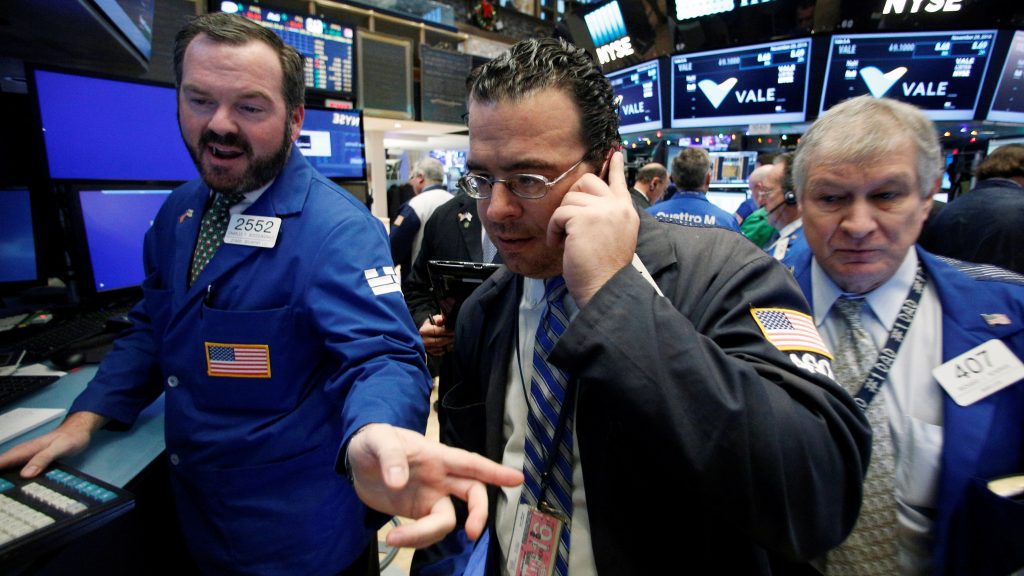
U.S. stocks seesawed Tuesday as investors look to close out a rocky month of trading that saw the S&P 500 flirt with bear market territory amid inflation and recession fears.
The Dow Jones Industrial Average fell about 140 points, or 0.4%. The S&P 500 fell 0.3%. The Nasdaq Composite eased 0.01%, after being up 0.5% at its highs and down nearly 1.6% at its lows.
After a holiday hiatus Monday, U.S. stocks are wrapping up a roller-coaster May. The Dow and the S&P 500 are both marginally higher on the month, while the Nasdaq is down roughly 2%.
Loading chart…
Tuesday’s market action underscored fears that high inflation is weighing on economic growth. In Europe, euro zone inflation readings released Tuesday hit a record high for a seventh straight month, surging 8.1% in May. In the U.S., the core personal consumption expenditures price index — the Fed’s preferred inflation gauge — rose by 4.9% in April from a year ago.
Action in the oil market was also front-of-mind for investors. Oil prices initially jumped following the European Union agreeing to ban most crude imports from Russia. Then, oil prices eased from highs as The Wall Street Journal reported the Organization of the Petroleum Exporting Countries was weighing suspending Russia from its oil-production deal.
Stocks were down broadly Tuesday with nine out of 11 S&P 500 sectors negative.
Health care was among the worst-performing spaces, down 1.3% Tuesday. UnitedHealth Group and Johnson & Johnson were among the biggest laggards on the Dow, off by more than 1% each.
Industrial stocks linked to the economic cycle also fell Tuesday. Honeywell and Boeing each lost about 1%.
Meanwhile, a rally in some mega-cap technology stocks provided a bit of support to the broader indexes. Amazon rose more than 3% and Google parent Alphabet gained more than 1%.
Earlier in May, the Federal Reserve hiked interest rates by half a percentage point in a bid to tamp down generationally hot inflation. Recession fears have mounted as market participants fear the Fed’s policy tightening will trigger an economic decline.
“Higher inflation and slower growth are now the consensus view but that doesn’t mean it’s fully discounted,” Morgan Stanley’s Mike Wilson said in a note Tuesday.
Disappointing quarterly reports in May from the likes of Walmart and Snap showed inflation hurting American consumers and eating into corporate profits.
Investors also eyed the continuing war in Ukraine and Covid outbreaks in China, raising concerns about global commodities and supply chain challenges.
Stocks struggled amid the negative cross currents. The S&P 500 on May 20 dipped into bear market territory briefly, falling 20% below its high at one point during the session. Meanwhile, the Dow saw its longest weekly losing streak since 1923, falling for eight consecutive weeks before a massive rally last week.
However, the Dow and the S&P 500 last week notched their best weekly gains since November 2020. The blue-chip average closed up 6.2% for the week, ending an eight-week losing streak. The S&P 500 gained 6.5%, and the Nasdaq added 6.8% on the week, ending positive after seven continual weeks of losses.
Still, stocks remain well off their highs. The Dow is about 10% below its record, the S&P 500 is down roughly 14%, and the Nasdaq is off by more than 25%.
“Bear markets are incredibly difficult to navigate, because they are inherently volatile and prone to sharp upside rallies,” Wolfe Research’s Chris Senyek said in a note Tuesday.

